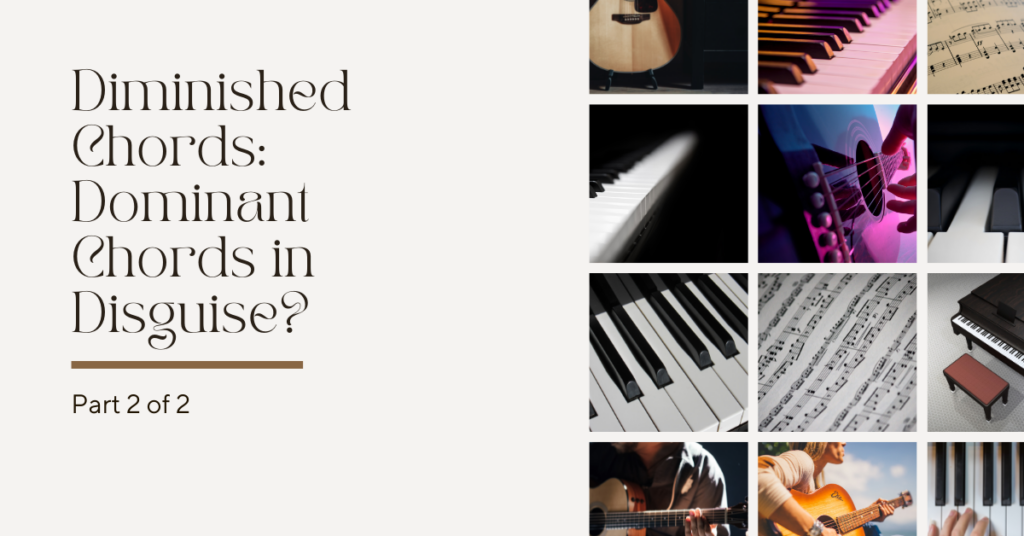Rootless voicings are an essential part of the jazz pianist’s vocabulary. They are used extensively for left hand comping and are also applicable when writing and arranging for other instruments. Understanding and being able to play rootless voicings is a big part of achieving that advanced, professional sound of the great jazz players. In this article we’ll look at a 3 and 4-step process for creating rootless voicings for major, minor, and dominant 7th chords. Then we’ll discuss a few specific practice ideas to get you play, memorizing, and mastering this critical jazz piano concept.
What are “4-Way Close-Position Rootless Voicings”?
“Four-way close-position rootless voicing” is a fancy way of referring to a 4-note chord that is in the range of an octave or less and does not contain the root of the chord.
- “Four-way” = four notes;
- “close-position” = in the range of one octave or less;
- “rootless” = not containing the root of the chord;
- “voicing” = the notes used to spell a particular chord.
Below we will examine how to create 4-way close-position rootless voicings for major, minor, and dominant chords.
Creating Rootless Voicings for Major Chords
In order to create rootless voicings for major chords we have a 3-step process:
STEP 1: Spell the chord in root position.
STEP 2: Invert the chord so that the 3rd or the 7th is the lowest note of the chord.
STEP 3: Replace the root with the 9th of the chord.
For Minor Chords (3-Step Process)
STEP 1: Spell the chord in root position.
STEP 2: Invert the chord so that the 3rd or 7th is the lowest note of the chord.
STEP 3: Replace the root with the 9th of the chord.
For Dominant Chords (4-Step Process)
STEP 1: Spell the chord in root position.
STEP 2: Invert the chord so that the 3rd or 7th is the lowest note of the chord.
STEP 3: Replace the root with the 9th of the chord.
STEP 4: Replace the 5th with the 13th.
Ideas for Practicing Rootless Voicings
Playing rootless voicings as part of a ii-V-I sequence is an excellent way to get more familiar with these chords. Not only will you get repeated practice at seeing how each chord leads to the next, but you will also get practice playing one of each chord type (major, minor, and dominant). For maximum benefit, practicing playing ii-V-I chord progressions using rootless voicings in all 12 keys. For example:
Notice that in the first example above, the minor chord (which uses the 7th as the lowest note) resolves quite easily to the dominant chord (which uses the 3rd as the lowest note). The dominant chord also resolves quite well to the major chord (which uses the 7th as the lowest note). This same voice leading is present in the second example above.
Another helpful practice tip, once you’ve gotten quite familiar with the rootless voicings, is to simply open a lead sheet of any jazz standard and practice comping through the chord changes using rootless voicings. This will not only get you more practice with the chords but serve as some great sight-reading practice for chord comping.













Really good! It has taken me a while to strengthen my vocabulary so that I know what you are talking about and can go straight to the chord formations and techniques. Practice advice is always appreciated.